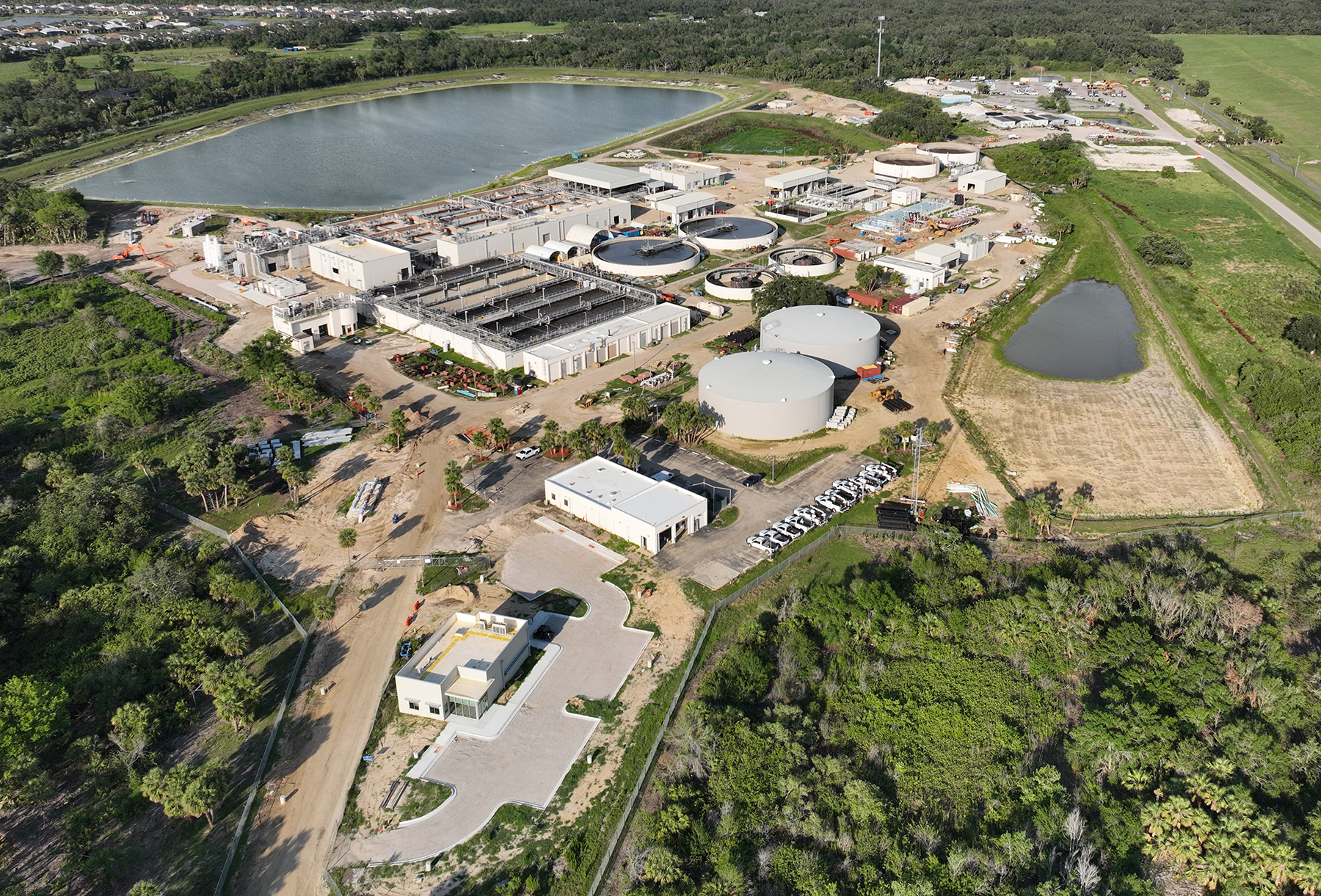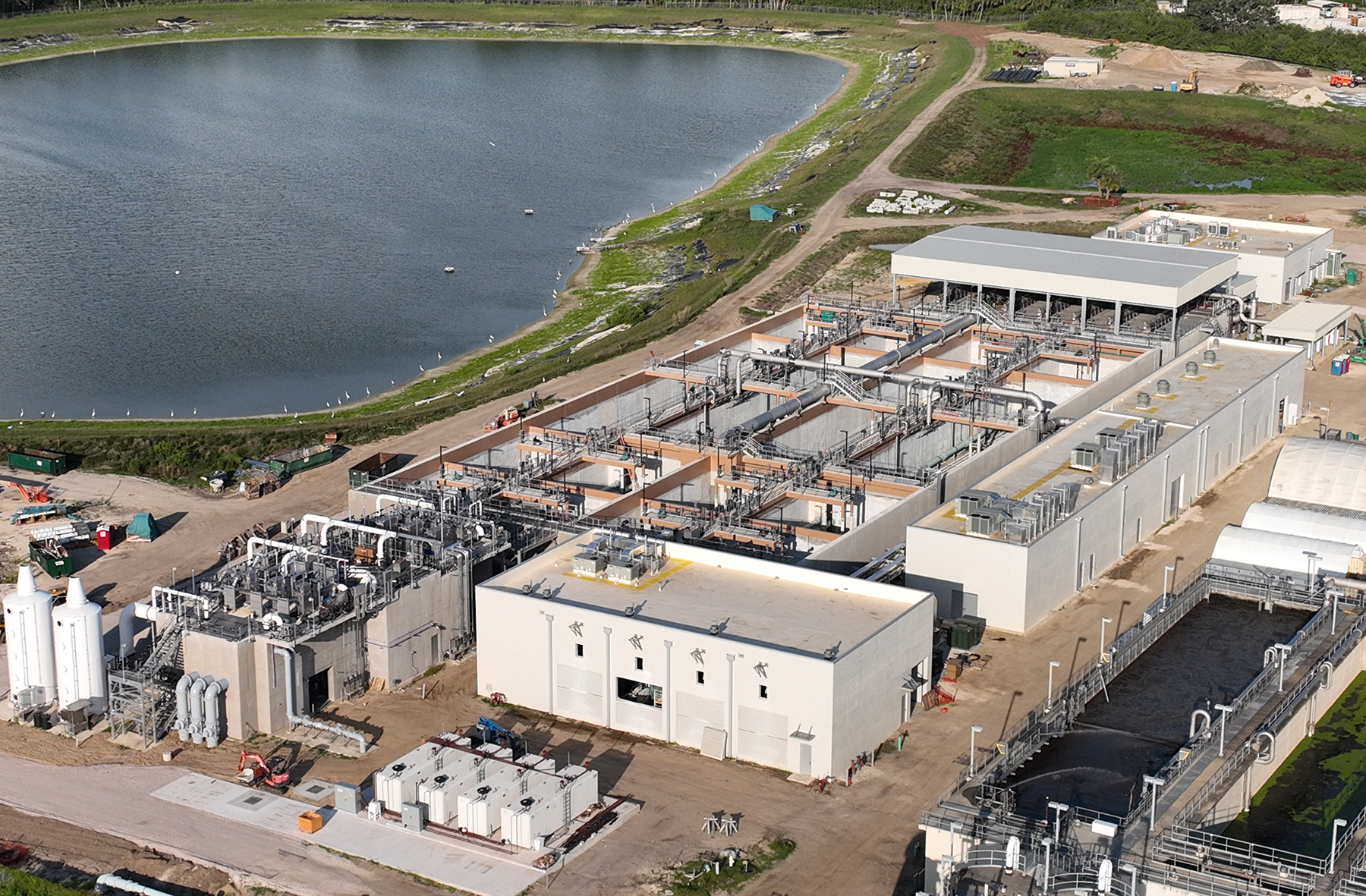 Carollo Engineers
Carollo Engineers A major upgrade is underway in Florida at Sarasota County’s Bee Ridge Water Reclamation Facility, where engineers are integrating design improvements and advanced treatment technologies – including what is expected to be Florida’s largest membrane bioreactor.
The new treatment system, which also incorporates biological nutrient removal basins and other components, is designed to achieve Florida’s Advanced Wastewater Treatment standards, targeting reductions in nitrogen and phosphorus discharges to protect local water resources.
Further reading:
- A California wastewater treatment plant is on track to generate its own power
- Can water treatment plant sludge be recycled into a shield from gamma radiation?
- Generative design helps Brazilian utility meet wastewater treatment goals
The ambitious BRWRF Expansion and Conversion to AWT project – to be completed by the end of 2025 – will increase the plant’s treatment capacity by 50%, from 12 million to 18 million gallons per day. It also features resiliency strategies to protect against extreme weather events, and through the AWT upgrade, the facility will produce high-quality reclaimed water for reuse.
To help finance the project – and reduce the financial impact on ratepayers – Sarasota County secured federal funding support in the form of a $105 million Water Infrastructure Finance and Innovation Act low-interest loan.
To carry out the project, the county retained Carollo Engineers as the primary designer to support Garney Construction, the project’s construction manager at risk. The CMAR delivery method was selected to streamline the schedule and help meet the county’s goal of completing the project by the end of the year.
A community acts
Like many regions across the U.S., much of Sarasota County was originally developed without centralized sewer infrastructure. Countywide, there was limited wastewater connectivity, and many areas were served by septic systems. Over time, as density increased, the county evolved from a decentralized network of independent wastewater plants to more of a regional system, but numerous pockets still rely on septic.
While effective for meeting treatment requirements, septic systems fall short when it comes to removing nutrients, according to Gregory Rouse, assistant utility director with Sarasota County Public Utilities. “In coastal communities, nutrient loading can lead to significant negative impacts,” he said. “In 2017 and 2018, we experienced some of the worst red tides in many years. Those events impaired water and air quality and resulted in widespread fish kills. They also disrupted tourism, placing a huge economic strain on local businesses.”
The silver lining was that the harmful algae blooms became a catalyst for mobilizing the local population.
“The community came together and decided to do something about it,” Rouse explained. “If nutrients are getting into our waterways and contributing in part to these red tides, what can we do to mitigate it? How can we improve our collection systems and the way we treat water to create fishable and swimmable bays and streams?”
In 2019, the Sarasota County Board of Commissioners convened a water quality summit that brought together local, regional, and state experts to discuss water quality issues. The event laid the groundwork for what became a community playbook for reducing nutrient loading to Sarasota’s local waters, an initiative originally developed and championed by the Gulf Coast Community Foundation. Building on this momentum, the board voted unanimously to expand the BRWRF and convert it to AWT.
Scaling up for reuse
With greater treatment capacity and higher-quality effluent, the upgraded facility will enhance Sarasota County’s ability to support growth and meet evolving regulatory requirements. It also expands the county’s beneficial reuse of treated water.
“At buildout, the project will not have any surface discharge; 100% of treated effluent will be reused,” said Brooke Bailey, the county’s director of public utilities. “What isn’t used for irrigation will be injected into salinity barrier wells. Ultimately, we view reuse as a way to conserve our potable water supply.”
This level of treatment also provides more flexibility for future reuse opportunities.
“It positions the county well ahead of the curve if they choose to pursue other options such as indirect potable reuse or aquifer recharge,” said Jody Barksdale, P.E., ENV SP, a Carollo vice president.
Weather-ready infrastructure
Several major storms have impacted southwest Florida recently, including Hurricane Debby in August 2024 and Helene and Milton, which struck just two weeks apart in fall 2024. With the ongoing threat of high-intensity storms and extreme rainfall, Sarasota County prioritized climate resilience strategies to protect the facility from flooding and high winds. The measures are designed to maintain operational continuity during severe weather conditions.
Improvements to the facility include hurricane-resistant construction, expanded stormwater basins, and locating structures 1 foot above the 100-year flood elevation.
Advanced Supervisory Control and Data Acquisition network upgrades support automated and remote operation, while integrated real-time monitoring systems with automated alarms enable rapid operator response. Additionally, redundant power supplies with uninterrupted backup systems keep essential processes running during utility outages.
“Treatment plants need to operate 24/7 regardless of the weather, and Bee Ridge will be the first of our structures designed to withstand Category 5 hurricane loads,” Rouse said. “Our new facility includes a visitor center that will also serve as our department operations center during extreme events, helping sustain continuity of service during emergencies.”
 Carollo Engineers
Carollo Engineers
By the time Hurricane Debby made landfall in early August 2024, causing widespread flooding across Sarasota County, most of the BRWRF’s stormwater infrastructure had been completed. “Debby was a 500-year storm event that unleashed 16-17 inches of rain in less than a 24-hour period,” Bailey said. “Bee Ridge took on significant water, but we were able to stay operational.”
“Being resilient doesn’t mean you’re not affected; it means you bounce back much quicker,” Barksdale added. “That’s exactly what this infrastructure is built to do.”
Gold recognition
Earlier this year, the Institute for Sustainable Infrastructure recognized the BRWRF with an Envision Gold award for its contributions to infrastructure sustainability. The BRWRF is the first water reclamation facility in Florida to win the award. The project earned gold for its excellence in environmental stewardship, climate resilience, resource efficiency, and community benefits.
“From a community standpoint, the Envision award went a long way towards showing our populace that we did the right thing,” Rouse said. “The transformation at Bee Ridge represents more than just a technology upgrade. It demonstrates a long-term investment in the environmental health and operational resilience of our community.”



